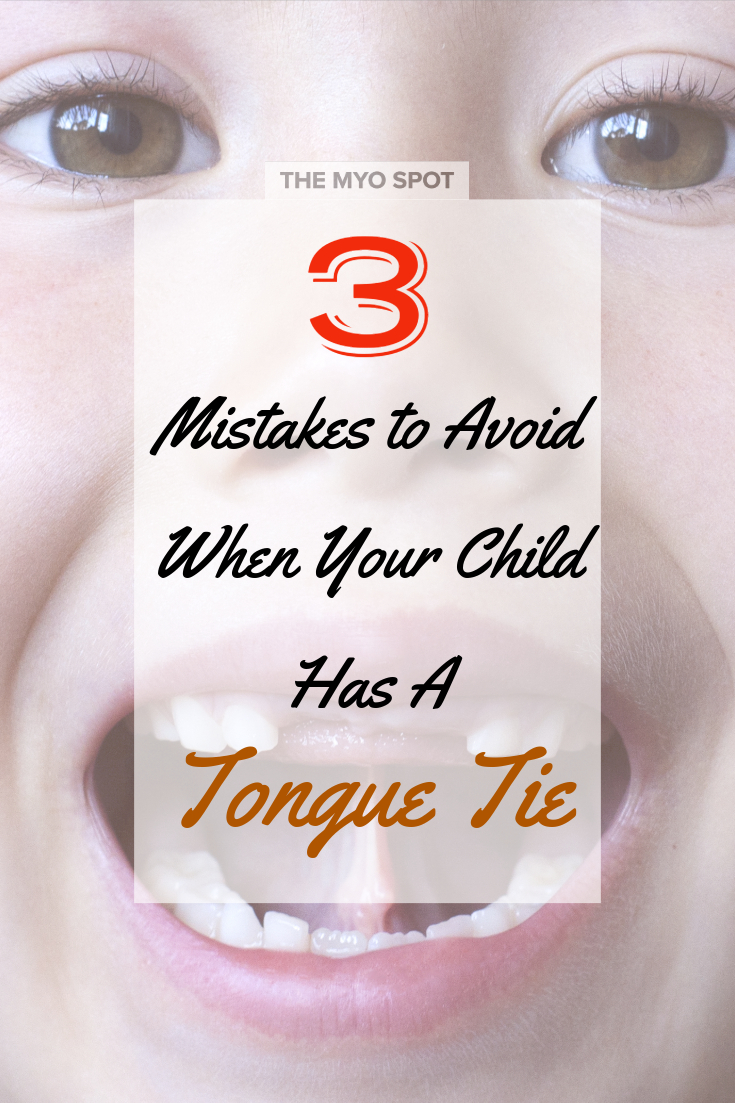With lip and tongue tie diagnosis at a recent high, and release providers popping up out of seemingly nowhere, it is almost inevitable that parents and children will make mistakes. Upon recently discovering that several providers in my area are now diagnosing and treating tongue and lip ties that I could not convince them existed previously, I am highly motivated to make sure you STEER CLEAR of predators.
Yes, for those in the back, STEER CLEAR of predators! Predators in this instance would be any dental providers who magically began to diagnose your child’s tongue tie and offer to treat it immediately. Why would I consider that a predator? Because they have little to no interest in your child’s well-being while having a steep investment in collecting insurance benefits.
I have little tolerance for those who exploit a real medical problem for their own financial gain with little regard for the consequences. As a lovely expansion of my original list of misinformation given by dentists, here are the top 3 mistakes to avoid when your child has a tongue tie.

3. Not Challenging The Professional
Consider how long an otolaryngologist (ENT or ears, nose, throat doctor) or an oral maxillofacial surgeon has to be in school and study to perform surgery. As a member of the dental team, I do not want you to misconstrue my next statement, because many of the pioneers and leaders in tethered oral tissue release are dentists with more than 20 years of experience. But many dentists spend a fraction of that time in learning to release tethered oral tissues. Does that make them unskilled? Absolutely not! But certainly worthy of questioning.
Just because something is offered, does not signify proficiency or experience. You are well within your rights to challenge the professional diagnosing and offering to treat your child with a surgery.
Pertinent questions immediately upon diagnosis:
- What symptoms do you note that indicate treatment?
- How can I get a second opinion?
- What are alternatives to treatment, if any?
- How long have you been releasing ties?
- Do you ever have to do re-releases?
- What is your reattachment rate?
I certainly consult with release providers prior to recommending or referring them to patients. You are highly encouraged to do the same while feeling no shame for challenging the professional. Take time to process the responses given and please don’t skip the next step.
2. Not Doing Your Own Research
This is the information age, and while confirmation bias is rampant, you should do your own research. Prior to getting your child’s tongue tie release you should confidently know and understand:
- What a tongue/lip tie is.
- What impact it may currently have on your child. (If there are no symptoms, there should be no surgery!)
- Surgical methods and options.
- What type of providers perform releases.
I know you are a responsible parent because you are here reading this. Use Google and the Ultimate Guide For The Tongue Tied to develop an educated opinion prior to release. This process also empowers your interview process for finding the right provider.
1. Not Seeking Myofunctional Therapy
The mere existence of a tie does not necessitate justification of release. The only reason to assess and subsequently operate on a tethered oral tissue is to restore function. Therefore, dysfunction must be present and outwardly expressed as a manifested symptom in the patient. Do not mistake this requirement as an option.
Function always trumps appearance. A tongue without a physical restriction, or tie, can be dysfunctional in use and at rest. It is important to know how to discern the difference between a functional tie, a dysfunctional untethered tongue, and a restricted dysfunctional tie. Treatment options are different for each and only one requires surgical release.
It is in knowing this information that I plead with you to find the nearest exit and walk, don’t run, away from any provider who does not mention, downplays the importance of, or is uninformed about myofunctional therapy. All ties should be assessed by a myofunctional therapist PRIOR to release. This is to: Get a functional diagnosis or second opinion, guidance and treatment plan for pre- and post-release exercises and stretches, and to develop a plan for restoring function.
Don’t sleep on that last point. Having a tongue with an optimal range of motion does not mean you magically get function. Tension and fascial strains may be released (although in many cases bodywork is still required for full release) without any change in tongue function during breathing, chewing, and swallowing. It takes a team approach to health in every instance of dysfunction. Hypothetically if a person underwent a surgical procedure for their hands a doctor would never suggest you hope for regaining full function with no subsequent therapy. Having surgery was step one, physical and occupational therapy is another critical component. Likewise, tongue tie release, no matter how many social media posts you read by other moms stating their child started performing new tasks instantly after release, requires rehabilitation.
It takes a village to raise a child and a team to release a tongue. The predator stands out as the sole provider who offers no team approach and makes no mention of restoring function.
This leads me to the many providers offering their patients YouTube as a post-surgical treatment option. If you need to reread that to take in the notion of a medical or dental professional who did NOT get training from YouTube, leading all their patients to a video of ill performed exercises for post-surgical care, please do. It’s similar to a contractor coming into your house to demo a wall and then leaving you with a YouTube link for DIY wall reconstruction.
Here’s the problem with YouTube videos for post-surgical management:
- It cheapens the procedure as being simple and magical. Medical doctors never perform surgery and suggest YouTube physical therapy, don’t let dental doctors do this to you. Simple in-office surgery is still surgery. Especially when active wound management is the protocol.
- It lacks personalization for individual capabilities. We are all individuals and with 8 pairs of muscles that innervate the tongue there is a variety of need you may have. Consider it similar to personal training, if my triceps are weak and I only do YouTube exercises that train my biceps I am not helping myself. Guidance makes all the difference as you get personalized recommendations for isolation, and restored function.
Granted, there are many cases of incredible need and parents who lack the financial ability to get full team treatment. I get it, I’m a mother of four. That’s why I am committed to providing affordable services and options. In that same vein I am opening up another avenue of professional support and care for those in need. To combat the growing number of releases without support I am offering the option to get myofunctional therapy with me pre and post procedure for $35/session or at a pay-what-you-can rate* (*based on expressed need in application). I’d rather give of my knowledge at a charity rate than see children be released inappropriately.
Putting it all together
In conclusion, be sure to question your provider thoroughly, be informed of the issue and how you desire it to be treated, and seek professional myofunctional care prior to scheduling surgery. Nothing is more affirming as a parent than being armed with knowledge to give your child exceptional care. Together we can end irresponsible releases.

One thought on “3 Mistakes to Avoid When Your Child Has A Tongue Tie”